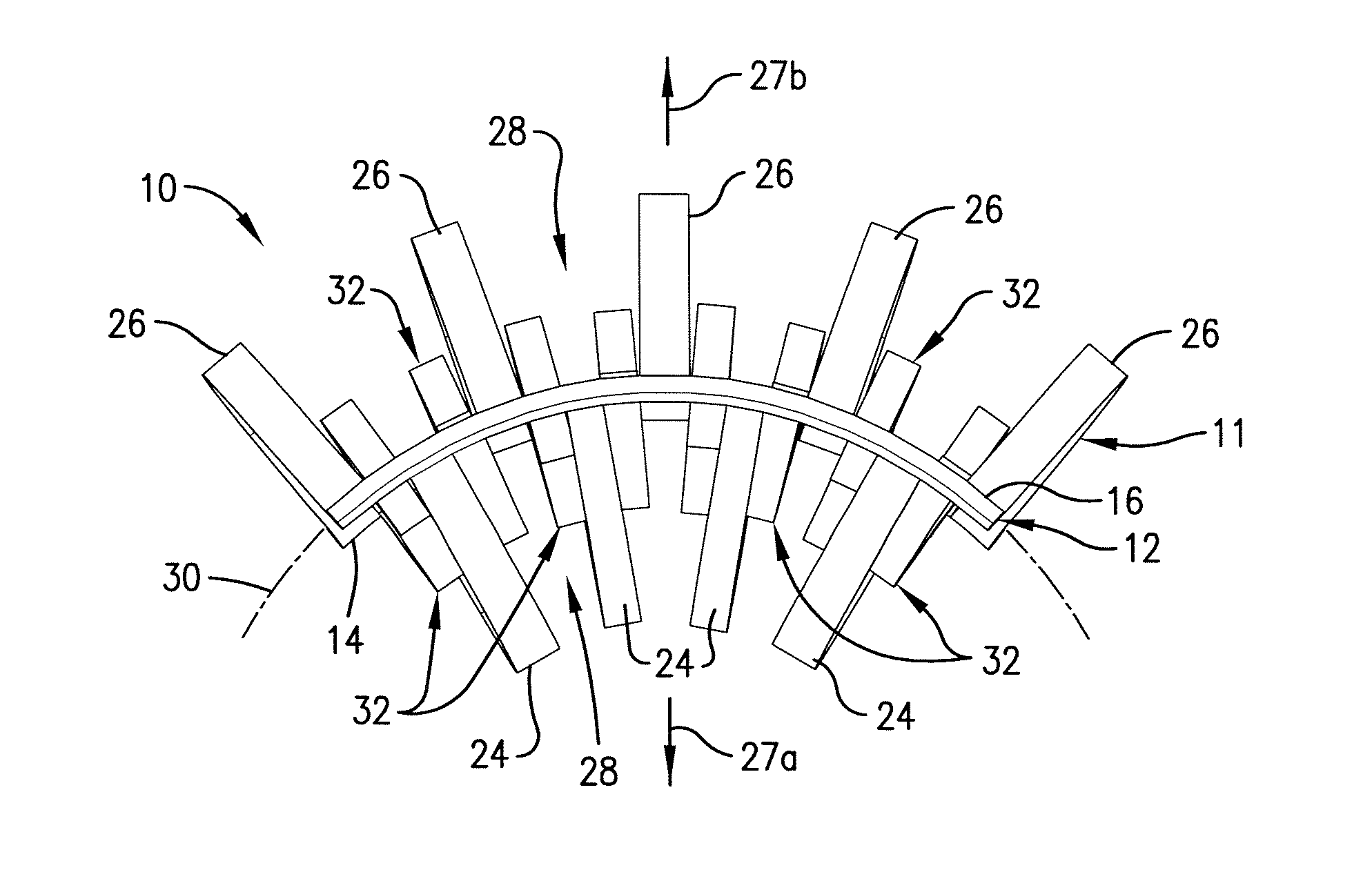Random packing elements and column containing same
a technology of random packing elements and columns, applied in the direction of machines/engines, separation processes, combustion-air/fuel-air treatment, etc., can solve the problems of limiting the performance of mass transfer elements, and reducing the effective surface area of mass and/or heat transfer elements, etc., to achieve uniform surface area distribution, reduce the restriction of fluid flow paths, and increase mass transfer efficiency
- Summary
- Abstract
- Description
- Claims
- Application Information
AI Technical Summary
Benefits of technology
Problems solved by technology
Method used
Image
Examples
example 1
[0039]The mass transfer coefficient was calculated for three different random packing elements: Comparative Element 1, a saddle-shaped random packing of the type illustrated in U.S. Pat. No. 4,303,599; Comparative Element 2, a saddle-shaped random packing element of the type illustrated in U.S. Pat. No. 5,882,772; and Inventive Element 3, the packing element 10 illustrated in FIGS. 1-13.
[0040]The mass transfer coefficient for each packing element was calculated for each of ten different packing orientations, labeled A through I in Table 1, below. Orientations A through I correspond to the element being positioned at 0°, 45°, and 90° from the base position for each of the three Cartesian axes. For each packing element, the mass transfer coefficient range was determined by subtracting the minimum from the maximum mass transfer coefficient among each position A through I. The average mass transfer coefficient for each packing element was then determined by averaging the individual mass...
example 2
[0044]Testing was conducted comparing the performance of the Inventive Element (packing element 110 shown in FIGS. 14-26) to that of four types of commercially-available random packings. A mixture of light hydrocarbons was distilled at total reflux. The tower was run at a pressure significantly higher than atmospheric pressure—very typical of the conditions at which these mixtures are being processed in industry, and very typical for the conditions at which random packing is often used. The tower diameter and bed depth were large enough to ensure that industrially relevant data were generated. Liquid samples from above and below the packed bed were analyzed to measure the packing efficiency. The maximum capacity of the packing was determined by increasing the heat input until the pressure drop increased very steeply with any additional heat input and entrainment from the top of the bed was significant (loss of efficiency). The results of the comparative testing are presented in Tabl...
PUM
| Property | Measurement | Unit |
|---|---|---|
| width | aaaaa | aaaaa |
| width | aaaaa | aaaaa |
| width | aaaaa | aaaaa |
Abstract
Description
Claims
Application Information
 Login to View More
Login to View More - R&D
- Intellectual Property
- Life Sciences
- Materials
- Tech Scout
- Unparalleled Data Quality
- Higher Quality Content
- 60% Fewer Hallucinations
Browse by: Latest US Patents, China's latest patents, Technical Efficacy Thesaurus, Application Domain, Technology Topic, Popular Technical Reports.
© 2025 PatSnap. All rights reserved.Legal|Privacy policy|Modern Slavery Act Transparency Statement|Sitemap|About US| Contact US: help@patsnap.com



